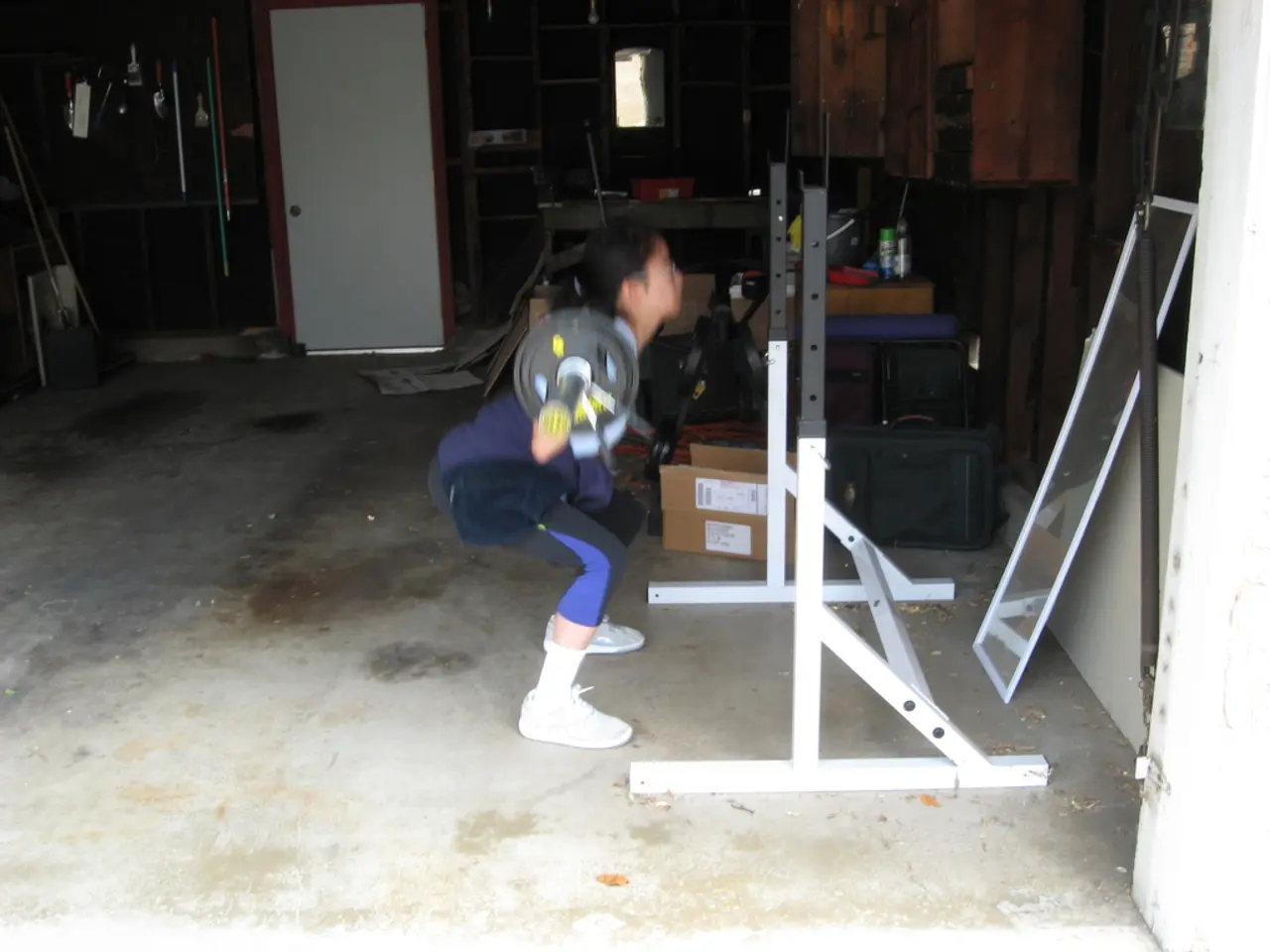Optimizing Workout Efficiency: Unraveling the Science Behind Compact Exercises
Efficient Fitness: Maximizing Results with HIIT, Strength Training, and Functional Movements
Are you looking to get the most out of your workouts in less time? A hybrid approach combining high-intensity interval training (HIIT), strength training, and functional movements can help you achieve optimal results efficiently.
High-Intensity Interval Training (HIIT)
HIIT has gained popularity for its ability to deliver cardiovascular benefits in a shorter timeframe. This exercise style involves short bursts of intense activity followed by brief periods of rest. Aim for 30-45 minute workouts, 4-5 days a week, incorporating exercises such as sprints, jumping jacks, mountain climbers, and burpees.
To optimize your HIIT sessions, use work-to-rest ratios tailored to your fitness level. For example, beginners might start with 60 seconds work / 90 seconds rest, while intermediates and advanced exercisers could try equal work/rest ratios or short bursts like 20 seconds work / 10 seconds rest for maximum intensity.
Strength Training
Strength training complements HIIT by building muscle, improving strength, and enhancing overall fitness. Focus on compound movements such as squats, deadlifts, and push-ups, performing 3-4 sets of 5-8 reps with heavy weights. Combine these exercises within your HIIT sessions to maximize muscle building and metabolic rate.
Functional Movements
Functional training directly translates to improved performance in everyday life and sports by building strength, balance, and mobility. Incorporate functional exercises into your strength routine, such as kettlebell swings, lunges, and box jumps.
Programming Tips
Balance intensity with sustainability. Maximum aerobic adaptations come from maintaining a sweet spot intensity rather than going all-out every interval. Manage lactate and anaerobic stress by adjusting intensity around your maximal aerobic speed (MAS), ranging from aerobic to strong anaerobic intervals, depending on goals. Vary your workouts over weeks to avoid plateaus, shifting interval lengths, rest periods, exercise types, and total duration.
Periodization and Smart Planning
The concept of periodization involves organizing your training program into cycles of intensity and volume to optimize performance and reduce the risk of overtraining. This approach helps prevent training plateaus by continually adjusting the intensity and volume of your workouts.
Practical Example Plan
- Warm-up (5 minutes): dynamic stretches, light cardio.
- HIIT circuit (15-20 minutes): alternate 20-30 seconds of high-intensity functional or strength movements with 10-15 seconds rest.
- Strength-focused block (optional, 10 minutes): heavier strength exercises with moderate rest.
- Cool-down (5 minutes): mobility and stretching.
This hybrid approach maximizes cardiovascular endurance, fat loss, muscle strength, and functional fitness efficiently in under one hour per session, fitting modern lifestyle demands and scientific evidence for optimal results.
While HIIT provides cardiovascular benefits, it's still important to include some form of steady-state cardio in your routine if you're aiming for optimal heart health. However, you can reduce the frequency of traditional cardio sessions.
Remember to ensure that you have at least 1-2 rest days per week to allow your body to recover. With this efficient workout strategy, you can achieve significant results in less time, making fitness more accessible and manageable for even the busiest individuals.




